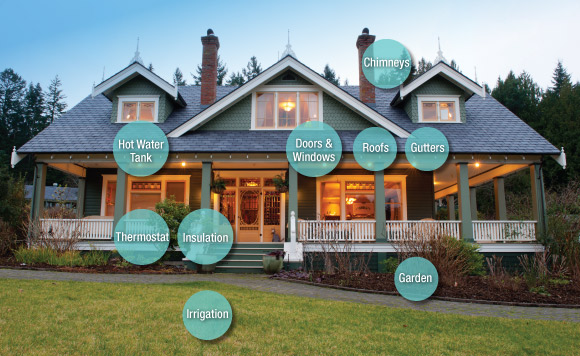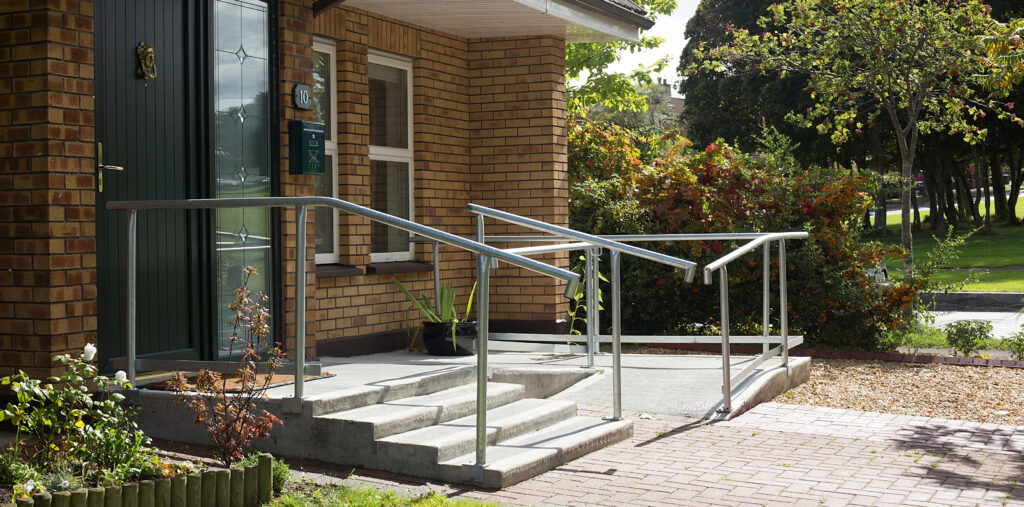– by Barry Mathias, photography by nuttycake.com –
Imagine, summer is suddenly over and torrential rain, strong winds and a drastic lowering of temperature occurs. What do you do? You light your wood stove … and smoke out the house: a bird has built a nest in the chimney! You notice your gutters are overflowing, strong drafts are coming into the house from around the windows and the doors, and the bedroom is an icebox. Oh, no! You didn’t do your pre-winter preparations!
While these problems can all be fixed, at a cost, “It certainly saves time and money if you follow a simple check list and deal with the problems before they occur,” says Tony Rechsteiner, who works in the Contract Sales Dept. of Slegg Building Materials. Tony came up with an ’11- point plan’ to help readers
He makes a number of useful suggestions: “Eavestroughs and gutters should always be checked for blockages to eliminate damage caused by overflows.” The same applies to exterior hoses, it is essential to detach exterior hoses, and shut off and drain exterior hose bibs. “If you do not have any shut off, you can purchase insulated hose bib covers. Cracked pipes and leaks can cause considerable damage, and repairs can be costly.”
Tony notes that it is not common practice for sprinkler contractors to dig the irrigation pipes deep enough to prevent freezing. “It’s best to get a professional to bring in an air compressor and blow out any remaining water in the pipes.” It is tips like this that can save money. “Chimneys of wood stoves should be checked annually,” he says. “However, depending on the use of the stove, an annual chimney sweeping might not be necessary.” He stresses that owners need to contact their insurance companies regarding the terms of their coverage.
“Those who have hot water tanks in their garages or have exposed pipes in their crawlspaces can save money by wrapping the exposed pipes,” Tony suggests. This can also prevent freezing-up, especially in unheated garages, and in older houses. “Newer houses have better insulation, but are very tight and this is not always a good thing. People should open windows and ensure the circulation of fresh air, especially in houses with wood burning stoves or gas furnaces. Every form of heating has its pros and cons,” he says.
Room heights are increasing. The traditional eight foot ceiling has now become a nine foot, and vaulted ceilings are very popular. Tony has this tip: “If you have a ceiling fan make sure to switch the direction to clockwise rotation in the winter; this will move the warm air which has risen to the ceiling down into the livable area of the room.”
Tony emphasizes the importance of a proper building inspection if you have recently moved into a house. If you intend to fix any problems yourself, be sure that you are complying with building code.
Saanich and the Gulf Islands is an area well-endowed with expert contractors, and Paul Admiral of Admirals Roofing is such an example. He advises homeowners to “clean all debris from gutters and roof valleys, and check ridge caps.” Cedar tiled roofs are prone to developing loose nails, and ridge caps can separate. “Owners of asphalt roofs should check them for missing tiles and ensure the flashing is in place around chimneys and skylights.”
Paul advises people to have their roof checked every five to seven years. “Just because a shingle roof has a 25 year warranty, it doesn’t mean it mustn’t be checked regularly.” High winds and severe weather conditions can cause unexpected damage. He says he often gets phone calls from people who say: “Our roof is leaking and it’s only five years old!” On inspection, he finds their roof valleys are full, and the water can’t drain because of debris. “Nothing is bullet-proof,” he says. “Maintenance is the responsibility of the owner, and November/December is the time for roof problems.”
Next, I spoke to Don Gulevich of Coastal Heat Pumps. Don was keen to give the following advice: “Ensure the filters are changed every three to four months.” He explained that the new high efficiency filters can act as dirty filters if not checked. “A heat pump system should be serviced on an annual basis, and not necessarily just in the fall.” He said that systems come with a ten-year guarantee for parts and labour, but regular maintenance is important.
A useful tip was that people should decide on a suitable temperature for their home and leave the thermostat alone. “People think that they save money by turning the temperature down at night, and back up again each morning. It’s not so; they are cooling the house when the outside temperature is also falling, and next morning the walls, floors, and ceilings are cool and a big increase in energy consumption is needed to get back to the preferred temperature.”
Don says he replaces both oil and electric systems: “We replaced three this week.” He explains: “When an existing system’s energy costs are high, people’s comfort levels are low. But after a heat pump installation their comfort level is high and their utility costs are low!”
My next contact was Rick of Pacific View Windows and Doors, who suggests that, although busy throughout the year, now is a good time for people to consider the replacement of their older windows and doors with new energy-efficient ones. “Most companies give free estimates, and can supply elegant vinyl windows or the more expensive wood frames in pine or more frequently in fir. The most popular doors are made of fiber glass or solid wood, usually fir,” he says.
“Recent drought conditions will have dried up the important fine roots of trees and shrubs, compromising their health and survival,” says Nathan Franklyn, who is an ISA Certified Arborist Representative with Bartlett Tree Experts. “Now is the time to look after your trees as root growth occurs during fall and winter,” he says. Nathan says arborists can give advice on “proper fertilization, biochar treatments and soil enhancements strategies, which will improve your trees’ and shrubs’ health for years to come.”
John Langard of ‘NEWater Septic and Drainage Ltd’. stresses: “winter rains and a rise in the water table can be challenges for septic systems that are overdue for maintenance.” He adds: “If your septic tank is due for a pump out, ensure it is done before winter, as the rising water table can cause empty tanks to rise out of the ground.”
Finally, it’s good to have your own ‘winter survival kit’ for when the power goes out: this includes candles, matches, spare batteries, a camping stove and easily heated canned or dry foods. Flash lights are important, especially those worn on the head. Oh yes, and get a good book!
– Pre-Winter Checklist, by Tony Rechsteiner –
1. Clear blockages in eavestroughs and gutters.
2. Check windows and door seals for air leakage and replace where required.
3. Visually inspect the exterior of your home for any cracks or holes that need filling.
4. Check attic and crawlspace areas for leaks. Do you have enough insulation?
5. Inspect and test your furnace. Change your furnace filter and clean out ductwork.
6. Detach exterior hoses, and shut off and drain exterior hose bibs.
7. Winterize your in-ground sprinkler system.
8. Check smoke detectors and CO₂ detectors and replace batteries.
9. Inspect chimney and keep the damper closed when not in use.
10. Economize by wrapping your hot water tank, and prevent freezing by wrapping exposed ducts or pipes in the garage and crawlspace areas.
11. Reverse the ceiling fan to clockwise direction for a warmer room.




